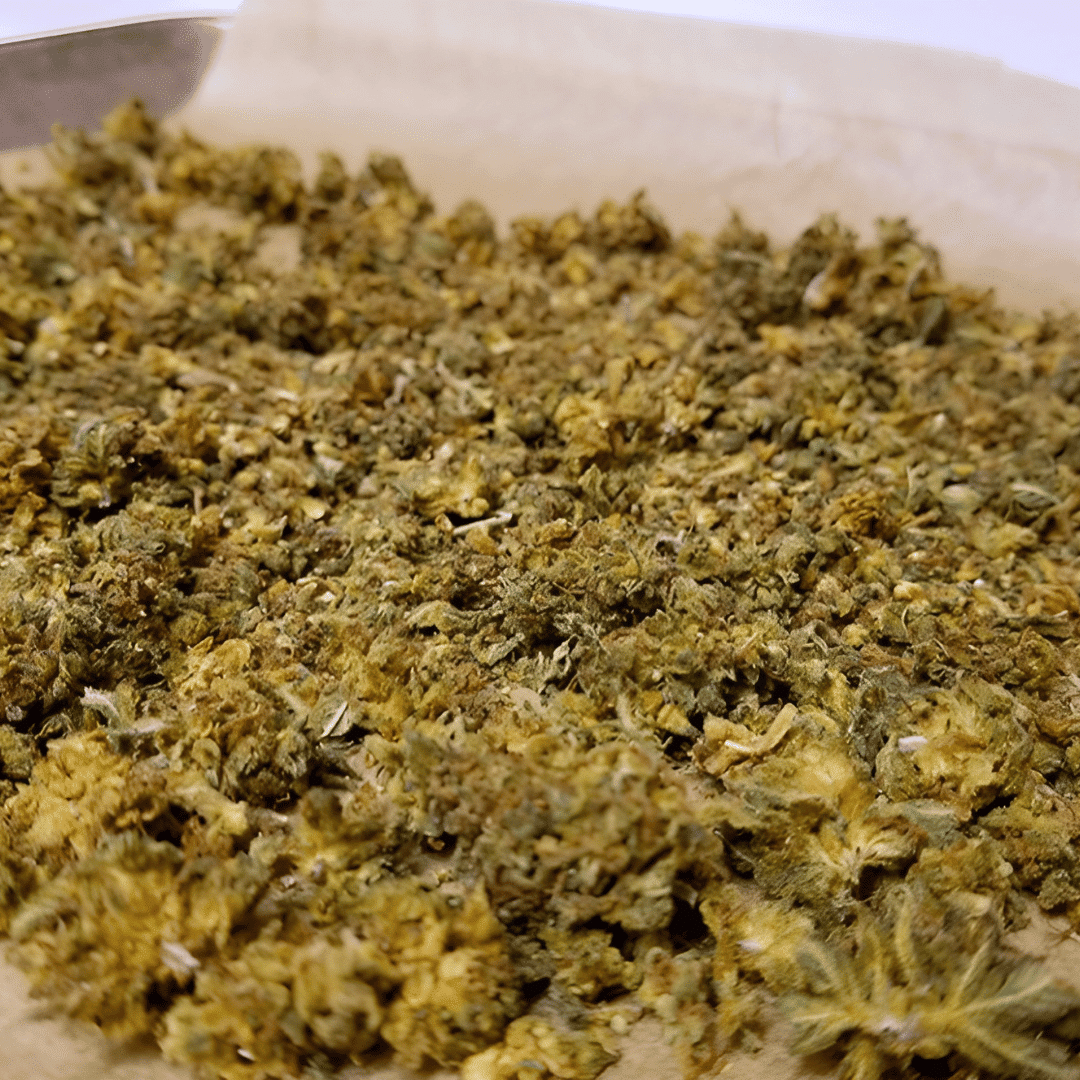Decarboxylation Methods: The Old School vs. The New School, A Step by Step Guide
Written by Trevor

Introduction: Understanding the Importance of Decarboxylation for Cannabis Edibles and Extracts
When it comes to cannabis edibles and extracts, one crucial process that often goes unnoticed is decarboxylation (click here to dive deeper into decarboxylation!). Different decarboxylation methods, also known as decarbing weed, is the chemical reaction that occurs when heat is applied to cannabis flower or concentrates, activating the THC, CBD, and other cannabinoids.
Understanding the importance of decarboxylation is essential for anyone looking to create potent and effective cannabis-infused products. Whether you are a seasoned cannabis enthusiast or a budding entrepreneur in the marijuana/hemp industry, grasping the science behind this process can elevate your edibles and extracts to a whole new level.
In this section, we will delve into the intricacies of decarboxylation for cannabis edibles and extracts. We will explore why it is necessary to activate THC and CBD through this process, how it affects potency and psychoactive effects, as well as various methods of achieving optimal decarboxylation results.
So if you’re ready to unlock the full potential of your cannabis creations and gain a deeper understanding of the decarb process, let’s dive in!

The Oven Method: Simple and Effective Decarboxylation at Home
Are you looking for a simple and effective way to decarboxylate cannabis at home? Look no further than the oven method. This tried and true technique allows you to activate the beneficial compounds in your cannabis flower with just a few easy steps.
Step 1: Preparing the Cannabis Flower
To begin, break up your cannabis flower into small pieces or grind it gently(need a grinder?). This will help expose more surface area for an even decarb process. Spread the ground or broken-up cannabis evenly on a baking sheet lined with parchment paper.
Step 2: Setting Up the Oven
Next, preheat your oven to the optimal temperature for decarboxylation. The ideal temperature range is typically between 220°F (105°C) and 240°F (115°C). This ensures that the cannabinoids, such as THC and CBD, are activated without being degraded.
Step 3: Decarboxylating the Cannabis Flower in the Oven
Place the baking sheet in the preheated oven and let it bake for approximately 30-45 minutes. Keep a close eye on it to avoid overcooking or burning your precious herb(interested in CBD flower?). You may also want to gently stir or shake the tray halfway through to ensure even heat distribution.
Once the time is up, remove the baking sheet from the oven and let it cool completely before handling or using your decarboxylated cannabis in recipes or preparations of your choice.
Step 4: Conclusion
The oven method offers simplicity and convenience, allowing you to easily activate cannabinoids in your cannabis flower without investing in specialized equipment. Whether you’re looking to make edibles, tinctures, or simply enhance the potency of your smoking experience, this method is an accessible option for any aspiring home chef or cannabis enthusiast.
So why wait? Give this straightforward oven decarb method a try today and unlock the full potential of your favorite herb!

The Sous Vide Method: Precise Temperature Control for Optimal Decarboxylation Results
The sous vide decarboxylation methods have revolutionized the process of decarboxylation for cannabis flower, offering precise temperature control that ensures optimal results. By utilizing a sous vide machine, cannabis enthusiasts can activate the THC in marijuana with unparalleled accuracy.
Traditionally, decarboxylation involves heating cannabis flower at a specific temperature to convert THCA (tetrahydrocannabinolic acid) into THC (delta-9-tetrahydrocannabinol), the psychoactive compound responsible for the desired effects. However, achieving consistent and precise temperatures can be challenging using conventional methods such as ovens or stovetops. (shop TCHA flower here! Shipped to your door!)
Enter the sous vide method, originally popularized in professional kitchens for its ability to maintain exact temperatures during cooking. With this technique, cannabis enthusiasts can now harness the power of temperature-controlled water baths to activate THC effectively.
Using a sous vide machine eliminates the guesswork and potential fluctuations that come with traditional decarboxylation methods. By setting the desired temperature on the machine and sealing your cannabis flower in an airtight bag or container, you can achieve consistent results every time.
The benefits of utilizing this method extend beyond just precise temperature control. Sous vide decarboxylation also minimizes odor during the process, making it an attractive option for those looking to maintain discretion while preparing their cannabis-infused creations.
Whether you’re a seasoned cannabis connoisseur or someone curious about exploring new techniques in marijuana activation, embracing the sous vide method offers an efficient and reliable way to unlock the full potential of your cannabis flower. Experience enhanced potency and consistency by incorporating this innovative approach into your decarboxylation routine.
Step 1: Preparing the Sous Vide Setup for Marijuana Decarb Process
Firstly, you will need a reliable sous vide machine capable of accurately maintaining temperatures within a specific range. Look for models that offer precise temperature control and have a wide enough temperature range to accommodate the decarboxylation process.
Step 2: Bagging and Sealing the Cannabis Flower
Next, ensure that you have a heat-resistant container or bag that is suitable for use with your sous vide machine. It is important to choose a container that can withstand high temperatures without leaching any harmful chemicals into your cannabis material.
Before placing your cannabis into the container, make sure it is properly prepared by grinding it into an even consistency. This will promote uniform heating during the decarboxylation process and maximize the potency of your end product.
Once your cannabis is ready, place it into a vacuum-sealed bag or an oven-safe container if using an open water bath setup. If using bags, make sure they are properly sealed to prevent any water from entering during the cooking process.
Step 3: Decarboxylating the Cannabis Flower with Sous Vide
When using sous vide for decarbing cannabis, it’s essential to follow the recommended temperature and time guidelines. The ideal temperature range for decarboxylation is between 200°F (93°C) and 220°F (104°C). Within this range, different compounds within the cannabis flower will activate at varying rates.
For a balanced decarb that preserves both THC and CBD, a temperature of around 220°F (104°C) for 90 minutes is commonly recommended. This allows for the conversion of THCA into THC while minimizing potential degradation or loss of cannabinoids.
However, if you prefer a more potent THC-focused result, you can opt for slightly higher temperatures around 230°F (110°C) for a shorter duration of about 60 minutes. This higher temperature will accelerate the decarb process but may result in some loss of terpenes.

Comparing the Oven Method and Sous Vide Method for Decarboxylation
When it comes to decarboxylation, there are various methods available, but two popular ones are the oven method and the sous vide method. Both methods have their pros and cons, but determining the best method for cannabis flower activation depends on your specific needs and preferences.
The oven method is a traditional approach that involves heating cannabis flower in an oven at a specific temperature for a certain duration. This method is widely used due to its simplicity and accessibility. It requires minimal equipment and can be easily done at home. However, one drawback of the oven method is that it can be difficult to maintain a consistent temperature throughout the process, which may result in uneven decarboxylation.
On the other hand, the sous vide method offers precise temperature control by using a water bath and immersion circulator. This technique allows for accurate decarboxylation without any risk of overheating or burning the cannabis flower. Additionally, sous vide decarb ensures even distribution of heat throughout the process, resulting in more consistent activation of cannabinoids.
While both methods have their advantages, it ultimately boils down to personal preference and convenience. If you prioritize simplicity and already have an oven at your disposal, the oven method may be suitable for you. However, if precision and consistency are important factors for you when activating cannabinoids in cannabis flower, then investing in a sous vide setup might be worth considering.
In conclusion, choosing between the oven method and sous vide method for decarboxylation depends on your desired level of control over temperature consistency during activation. Consider your priorities and resources before deciding which approach suits your needs best.
Conclusion: Mastering the Art of Decarboxylation to Enhance Your Cannabis Edibles and Extracts
In conclusion, mastering the art of decarboxylation is crucial for enhancing the potency and effectiveness of your cannabis edibles and extracts. By understanding the importance of proper decarboxylation methods, you can ensure that you achieve the desired THC potency in your homemade creations.
Decarboxylation is a process that activates the cannabinoids in cannabis by heating it at a specific temperature and time. This process converts non-psychoactive THCA into psychoactive THC, allowing you to fully experience the desired effects of cannabis when consumed orally.
By utilizing proper decarbing techniques, you can maximize the potential of your homemade edibles and extracts. This means that you have better control over the potency and consistency of your products, ensuring a more enjoyable and predictable experience for yourself and others.
Whether you’re a seasoned cannabis enthusiast or a beginner in the world of edibles, understanding how to properly decarb your cannabis is essential. It allows you to unlock the full potential of this versatile plant, creating potent and effective products that cater to your specific needs.
So, take the time to learn about different decarbing methods such as oven baking or sous vide cooking. Experiment with temperatures and durations to find what works best for you. With practice and knowledge, you can master this art form and elevate your cannabis-infused creations to new heights.
Remember, proper decarbing techniques are not just about achieving desired THC potency; they also contribute to safety by ensuring that any potential contaminants are eliminated through proper heating processes. So invest some time in learning these techniques – it will be well worth it in enhancing both the quality and effectiveness of your homemade cannabis edibles and extracts.
Enjoy This Article?
If you enjoyed this article and want to check out our Instagram page for a better look at all products. Sign up for our newsletter and follow our Twitter Page for a more posts like this and exclusive deals








